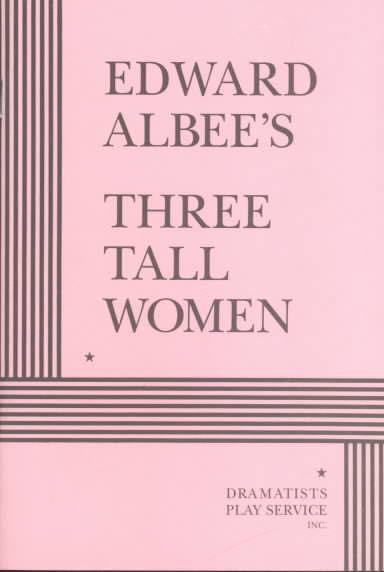7.8 /10 1 Votes7.8
Genre Drama | 3.9/5 Goodreads Date premiered June 14, 1991 First performance 14 June 1991 Original language English language | |||||||||||||||||||||||||||||||||
 | ||||||||||||||||||||||||||||||||||
Characters a woman in her 90sa woman in her 50sa woman in her 20sThe Boy Place premiered Vienna's English TheatreVienna, Austria Similar Edward Albee plays, Dramas | ||||||||||||||||||||||||||||||||||
Three tall women
Three Tall Women is a play by Edward Albee, which won the 1994 Pulitzer Prize for Drama, Albee's third.
Contents
- Three tall women
- Colorado state university s ypo production of three tall women 11 4 15
- Characters
- Overview
- Act I
- Act II
- Productions
- Awards and nominations
- References
Colorado state university s ypo production of three tall women 11 4 15
Characters
Overview
The protagonist, a compelling woman more than 90 years old, reflects on her life with a mixture of shame, pleasure, regret, and satisfaction. She recalls the fun of her childhood and her early marriage, when she felt an overwhelming optimism. She also bitterly recalls negative events that caused her regret: her husband’s affairs and death, and the estrangement of her gay son.
The woman’s relationship with her son is the clearest indication that Albee was working through some troubled memories of his own in Three Tall Women. Raised by conservative New England foster parents who disapproved of his homosexuality, he left home at 18 like the son in this play. Albee admitted to The Economist that the play "was a kind of exorcism. And I didn’t end up any more fond of the woman after I finished it than when I started."
Besides exorcising personal demons, Albee regained the respect of New York theater critics with the play. Many of them had despaired that the playwright, who showed such promise during the 1960s and 1970s, had dried up creatively. In fact, Three Tall Women was awarded the Pulitzer Prize for Drama in 1994, as well as the Drama Critics Circle, Lucille Lortel, and Outer Critics Circle awards for best play.
Act I
The play opens with the three major characters together in A's bedroom. Throughout the scene, A does most of the talking, frequently reminiscing and telling stories about her life. B humors her, while helping her do everyday things that have become difficult to do alone (sitting down, going to the bathroom, getting into bed). C, while getting a rare word in edgewise about the duties she's there to accomplish, is most often deterred by A's slipping into long-winded storytelling. C often challenges issue A's contradictory and nonsensical statements; but she is discouraged by B, who is clearly used to A and her habits. Act 1 ends when A, in the middle of one of her stories, has a stroke.
Act II
The play picks up with a mannequin of A lying in a bed. A, B, and C are no longer the separate entities of Act 1, but represent A at different times in her life (their ages corresponding to those of A, B, and C in Act 1). Since A, B, and C in this act are all very coherent (unlike the senile A of Act 1), the audience gets a much clearer insight into the woman's past.
At one point, the son comes in to sit by the mannequin. A and B (who are invisible to him) are not happy to see him, because of the rift between them. C (also unseen by the son) is none the wiser, because she is from a period in the woman's life before her marriage. He says nothing throughout, and leaves before the end of the play.
The play ends with A, B, and C debating about the happiest moment in their life. A has the last word, saying, "That's the happiest moment. When it's all done. When we stop. When we can stop."
Productions
Three Tall Women had its world premiere at the English Theatre, Vienna, Austria in June 1991. The play was directed by Albee, with a cast that included Myra Carter as the Old Woman, Kathleen Butler as the Middle-Aged Woman, Cynthia Bassham as the Young Woman, and Howard Nightingall as the Boy.
The play opened Off-Broadway at the Vineyard Theatre on January 27, 1994, and closed on March 13, 1994. Directed by Lawrence Sacharow, the cast featured Jordan Baker (as "C"), Myra Carter (as "A"), Michael Rhodes (as the Boy), and Marian Seldes (as "B"). The production moved to the Promenade Theatre on April 13, 1994, where it ran to August 26, 1995.
The play premiered in the West End at the Wyndhams Theatre in October 1994, directed by Anthony Page and featuring Maggie Smith (Elder Tall Woman), Frances de la Tour (Middle Tall Woman), Anastasia Hille (Younger Tall Woman), and John Ireland (the Boy).
The play was revived in London at the Wyndhams Theatre in October 2011, with direction by Anthony Page and featuring Maggie Smith, Sara Kestelman and Samantha Bond.
